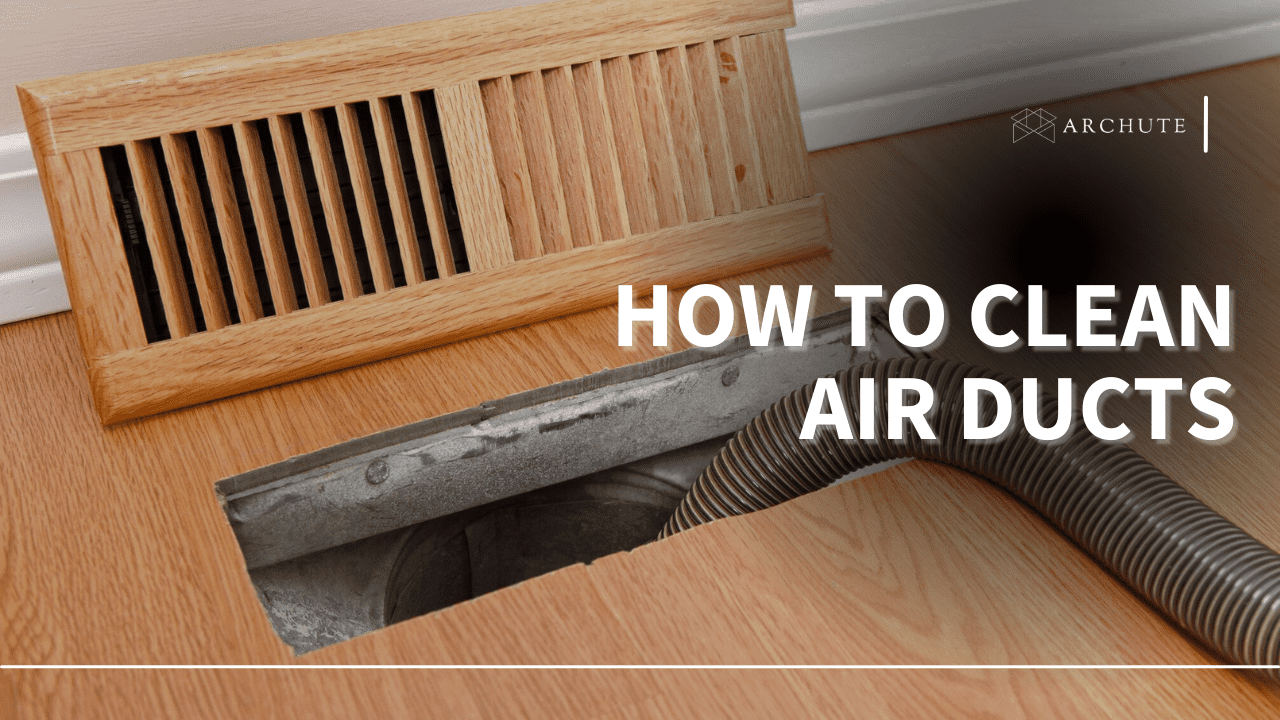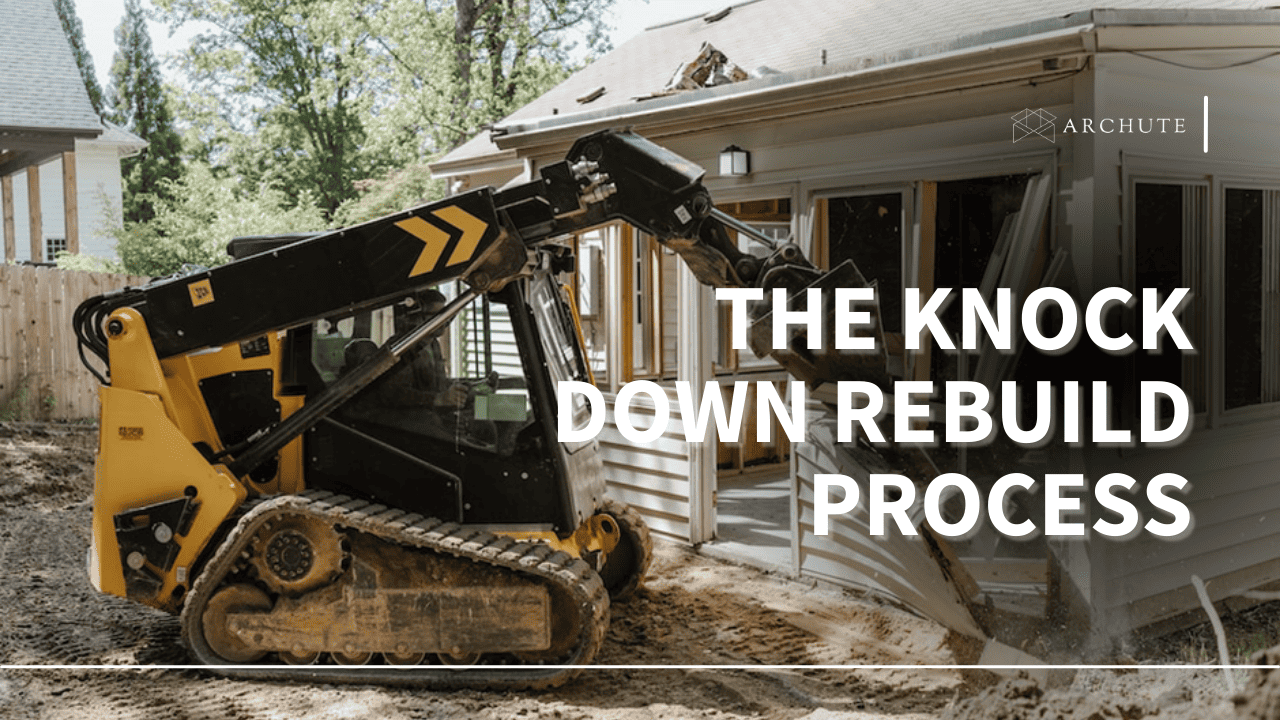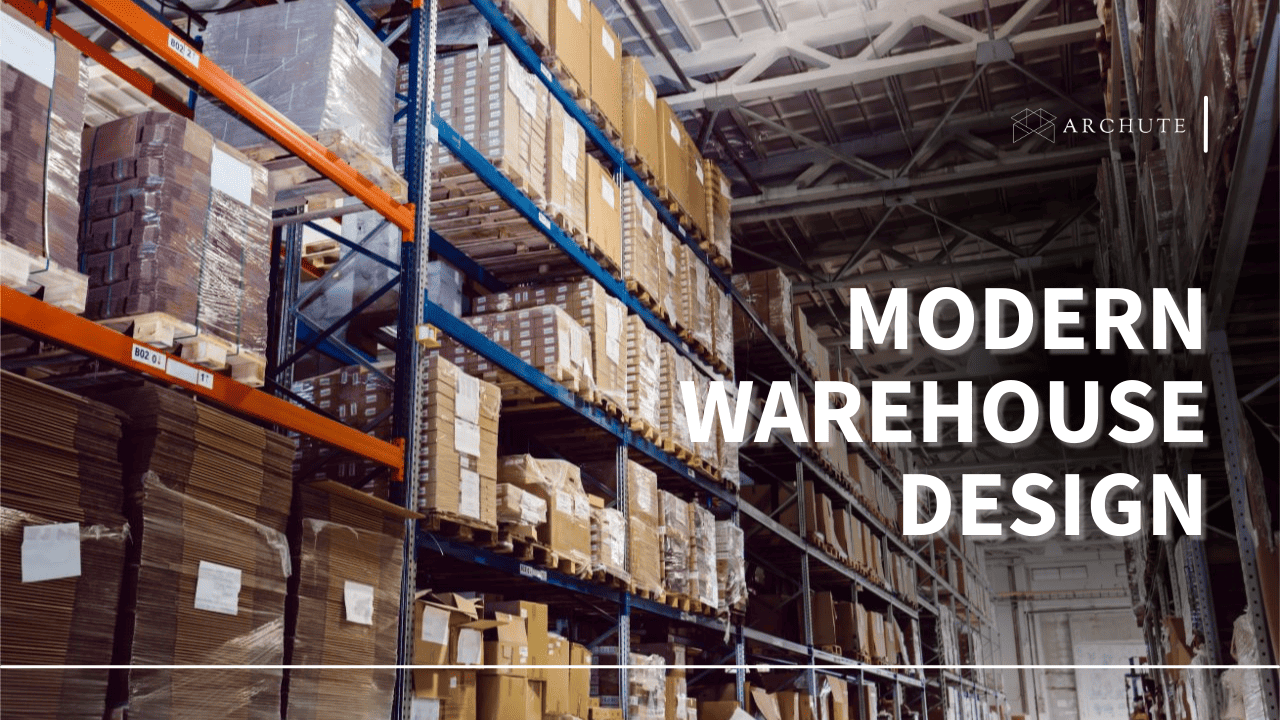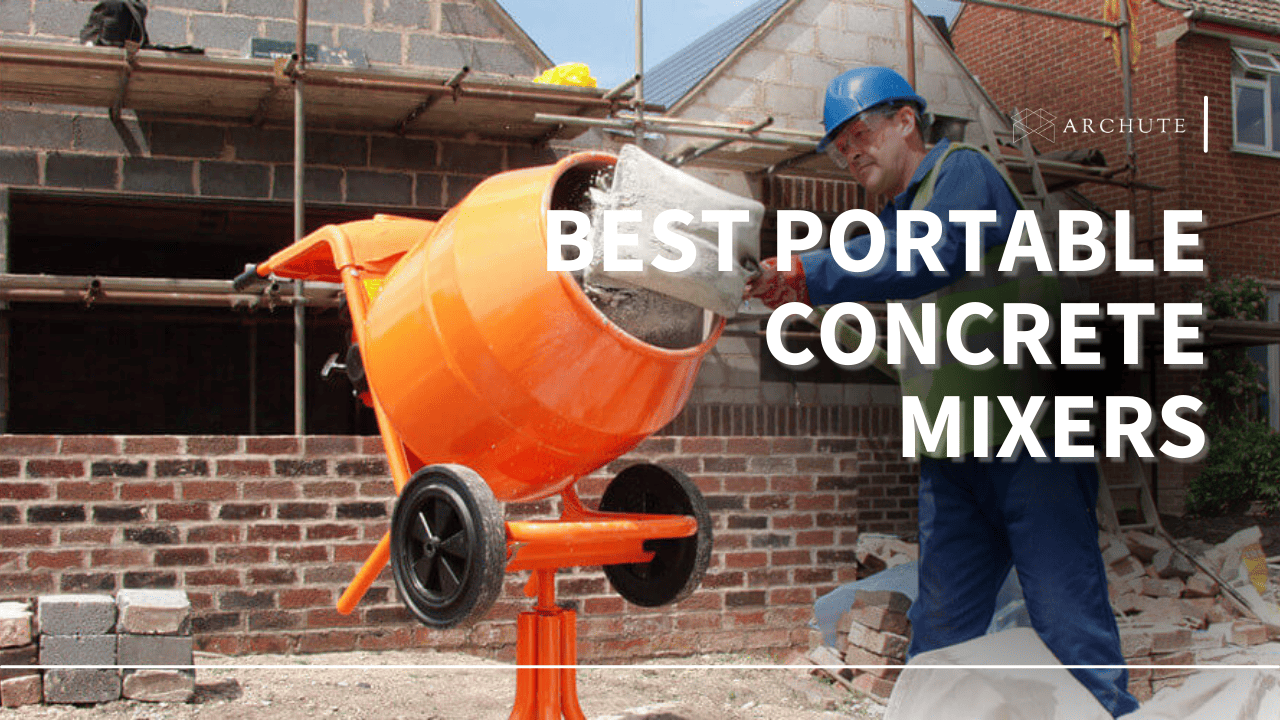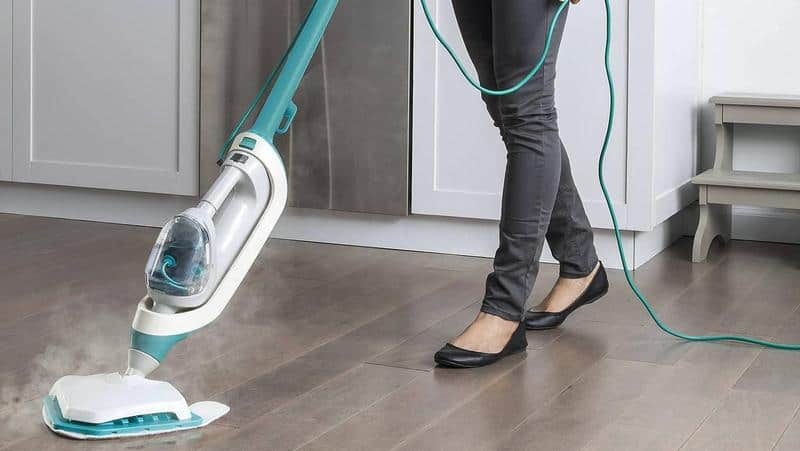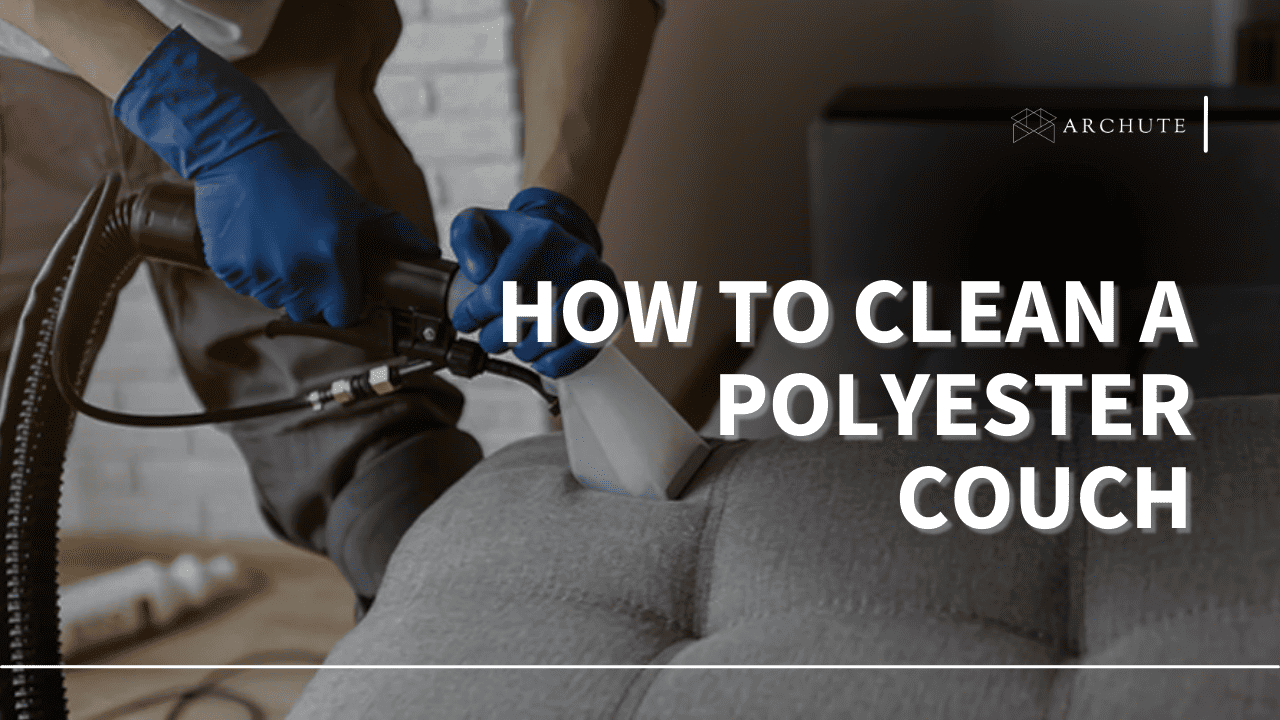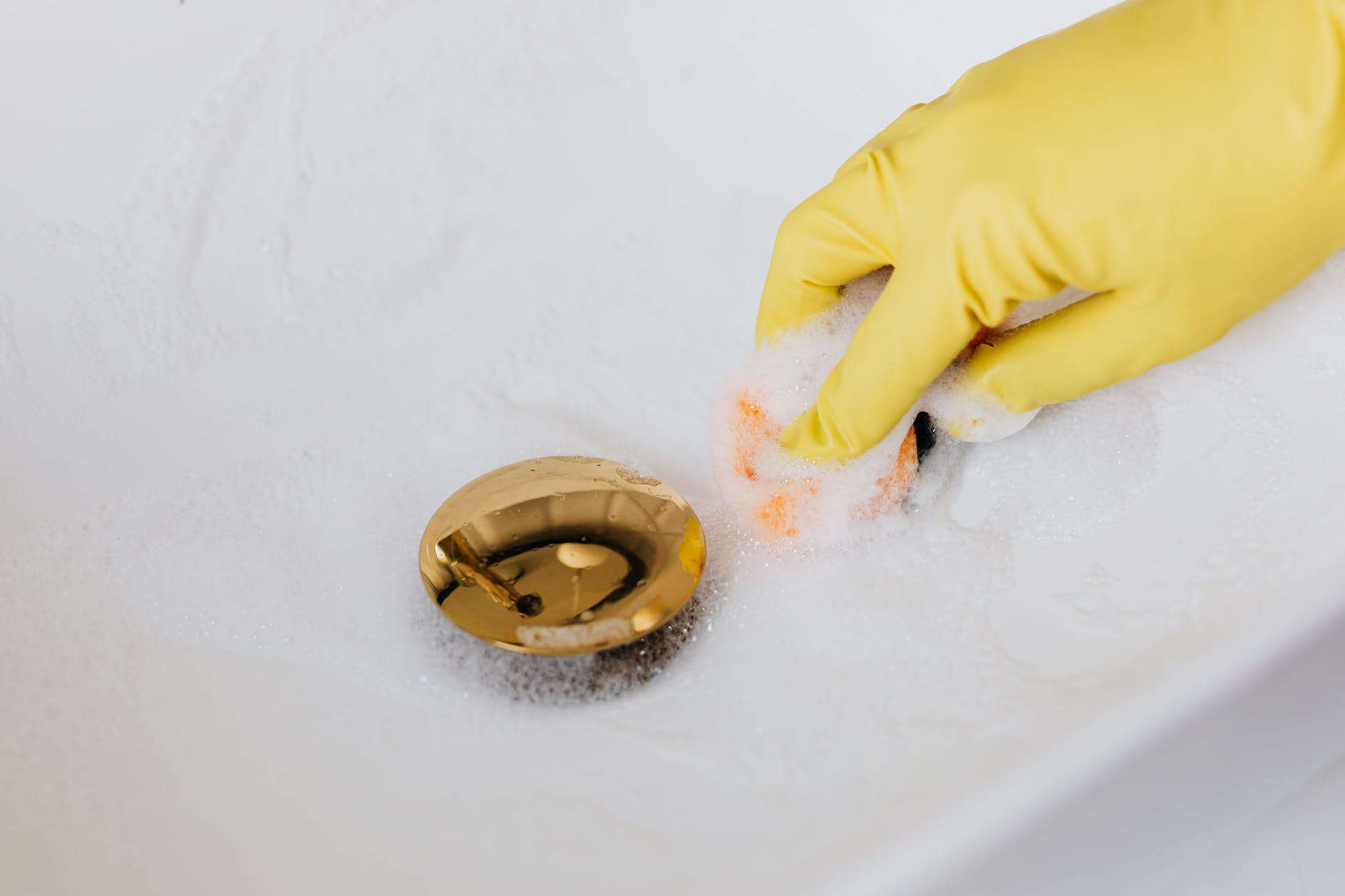Over time, your air ducts will naturally accumulate dust and debris. When it does, removing these particles is important to keep your home clean and safe.
Many assume that to remove dust and debris from air ducts, you should always call the professionals. Unfortunately, since professional duct cleaning services can be costly and a hassle, many people opt out and leave their air ducts dirty since you have to accommodate people coming in and out of your property.
Since you have to accommodate people coming in and out of your property, many people opt out and leave the air ducts dirty.
The good news is that there are ways for you to remove dust and debris from air ducts on your own. But first, we need to answer the question;
What is Air Duct Cleaning?
Air duct cleaning removes dust, debris, and other contaminants from your home or office’s heating, ventilation, and air conditioning (HVAC) system. This is done by cleaning the various components of the HVAC system, including the supply and returns air ducts, registers, grilles, diffusers, heat exchangers, cooling coils, and air handling units.

Image credit: angi.com
The purpose of air duct cleaning is to improve indoor air quality and increase the efficiency of the HVAC system. Over time, the ducts in your home or office can become clogged with dirt, dust, and other particles. This can lead to poor indoor air quality, as these contaminants are circulated throughout the building. In addition, a dirty HVAC system can reduce the system’s efficiency, leading to higher energy bills.
Having understood what the process entails, let’s dive into some of the tips on how to go about it:
1. Determine if Your Air Ducts Need Cleaning
The first step in cleaning air ducts is determining if they need cleaning. Several signs can indicate that your air ducts need cleaning, such as:
- Excessive dust and debris in your home or around the air registers
- Musty or stale odors coming from the air ducts
- Visible mold growth in or around the air ducts
- Increased allergies or respiratory problems among the occupants of the house
If you notice any of these signs, it’s time to clean your air ducts. For preventive purposes, you must have the right gear for the job.
2. Things You Will Need to Clean Your Air Ducts

Image credit: safeairduct.com
a) Safety Equipment
Before cleaning your air ducts, you must have the safety equipment to protect yourself from harmful substances. This includes a dust mask or respirator, gloves, safety goggles, and protective clothing.
b) Vacuum Cleaner
A high-powered vacuum cleaner is essential for cleaning air ducts. The vacuum cleaner should have a HEPA filter to capture small particles, including dust, pollen, and mold spores. When cleaning the air ducts, the vacuum cleaner should be set on the highest suction setting to remove as much dirt and debris as possible.
c) Brush
A brush is essential for dislodging debris and dust from the air ducts. The brush should have soft bristles to avoid damaging the air ducts.
d) Compressed Air

Image credit: superiorairduct.com
Compressed air is useful for blowing debris and dust out of the air ducts. Compressed air can be combined with a brush to loosen dirt and debris from the air ducts.
e) Disinfectant
After cleaning your air ducts, it is important to disinfect them to kill any bacteria and mold spores that may be present. A disinfectant can also help eliminate any unpleasant odors caused by mold and bacteria. Before using a disinfectant, it is important to read the instructions carefully and follow the manufacturer’s recommendations.
f) Screwdriver
A screwdriver is essential for removing the air duct covers and grilles. The air duct covers, and grilles can become clogged with dust and debris, making it difficult for air to circulate through the air ducts.
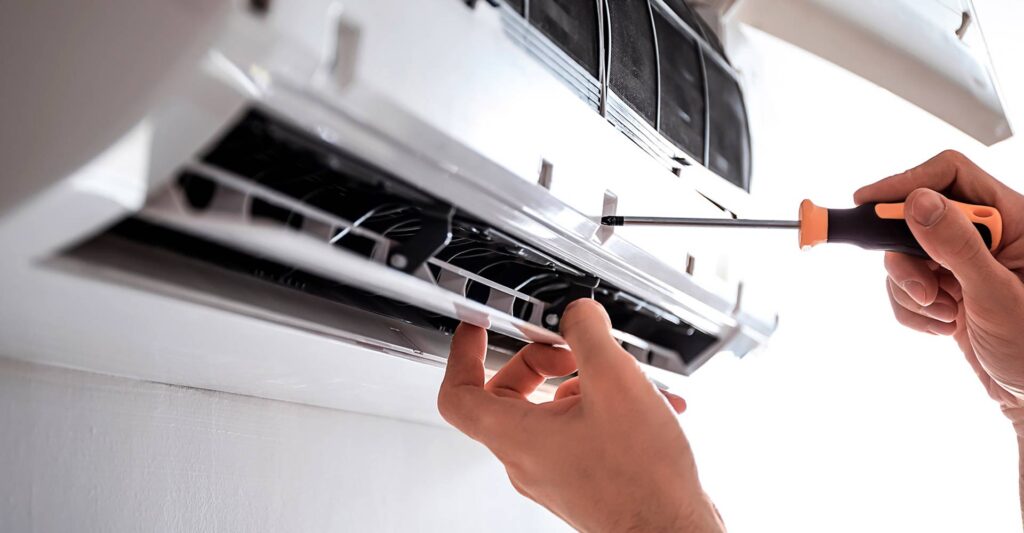
Image credit: coastalpowervacuum.com
g) Cleaning Solution
A cleaning solution can remove stubborn stains and debris from the air ducts. There are different types of cleaning solutions that you can use, including a commercial cleaning solution or a natural solution such as vinegar or baking soda.
h) Ladder
A ladder is necessary for accessing air ducts that are located high up or in hard-to-reach places. You may need to climb up the ladder to remove air duct covers and grilles or access air ducts in the ceiling.
Image credit: dirtiducts.com
i) Plastic Bags
Plastic bags can be used to collect dust and debris that is removed from the air ducts. When cleaning the air ducts, it is important to contain the dust and debris to prevent it from spreading throughout the house.
j) Flashlight
A flashlight is essential for inspecting the air ducts and identifying areas requiring special attention. The flashlight can be used to look inside the air ducts and check for signs of mold, mildew, or other types of damage
3. Turn Off Your HVAC System

Image credit: cielowigle.com
Before cleaning your air ducts, turn off your HVAC system. This will prevent dust or debris from circulating throughout your home during cleaning. It’s also important to cover the air registers with plastic sheeting to prevent dust or debris from entering your home.
4. Ventilate The Room
Make sure that the room where your air duct opening is located is fully ventilated because when you brush the dirt and debris away, the particles can fly into the air. When the room is sealed tight, it will keep flying around, affecting the overall air quality.

Image credit: theeducatoronline.com
You can improve the air ventilation of the room when cleaning the air ducts by simply opening the windows. An electric fan will also help circulate the air better throughout the space.
5. Protect Your Eyes When Cleaning The Air Ducts
When cleaning your air ducts, it’s a big chance for dust particles to be everywhere. Because of this, it’s highly recommended that you wear eye protection to avoid dust particles and debris irritating your eyes. You can use industrial goggles or anything that gives you visibility but fully covers your eyes.

Image credit: besthvacservices.com
6. Remove and Clean the Air Registers
The air registers are the grills that cover the openings in your air ducts. Start by removing the air registers using a screwdriver. Once you’ve removed them, clean them thoroughly with a soft-bristled brush and a cleaning solution. You can also wash them with soap and water if they are dirty. Make sure to dry them completely before reinstalling them.
7. Clean the Ducts With a Vacuum Cleaner
Once you’ve cleaned the air registers, it’s time to clean the air ducts. Use a vacuum cleaner with a hose attachment to clean the ducts. Ensure the vacuum cleaner has a HEPA filter to prevent dust or debris from getting into the air. Run the vacuum cleaner hose as far into the ducts as you can reach, cleaning the sides of the ducts as you go.
8. Use An Extension Hose
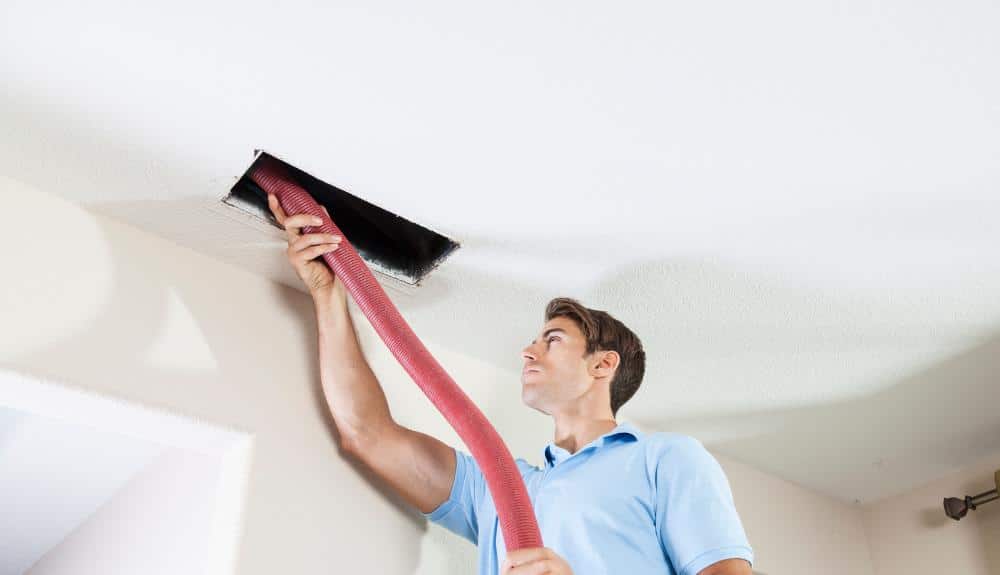
Image credit: acrepairsrockwall.com
The hose length of your vacuum might not be enough to reach all the parts of an air duct. When this happens, you can use an extension hose so the vacuum can reach all the crevices of the air ducts. This way, you can thoroughly remove the dust and dirt particles accumulated inside without a hassle.
9. Be Careful When Brushing
Brushing is the best way to agitate the dust and debris particles on your air duct. However, it’s important to use light touches when brushing along the duct’s walls if you have crinkly mylar flex ducts because these can be easily damaged.
Meanwhile, if you are removing dust and debris particles on exposed ducts, tapping it several times would help loosen the dirt and debris. This would make it easier for you to clean the inside of the air ducts thoroughly.
10. Install Disposable Filters
Once you’ve cleaned your air ducts, it’s a good idea to install disposable filters to trap any dust or debris that may have been left behind. These filters can be easily replaced every few months to maintain good indoor air quality.

Image credit: ushomefilter.com
11. Don’t Forget To Clean The Blower Compartment
The air duct’s blower compartment is one of the areas where most dirt and dust accumulate. It’s important to clean it periodically as well. You can do this using a vacuum cleaner, but just be careful not to damage the furnace’s fan.
12. Create A Checklist
An air duct has several components where dust and debris accumulate. Forgetting to clean one area means that your air ducts are not thoroughly clean, and the air quality in the room is not the best. To ensure you clean everything, it’s best to create a checklist.
A checklist will help you keep track of what you have cleaned and the components you should clean next time. It will also help you determine when you should schedule your cleaning. When making your checklist, breaking down the heating and cooling system components into categories will make tracking everything more manageable.
13. Regularly Maintain Your Air Ducts
Regular maintenance of your air ducts is important to ensure good indoor air quality and the efficient operation of your HVAC system. Here are some tips for maintaining your air ducts:
i. Change Your Air Filters Regularly
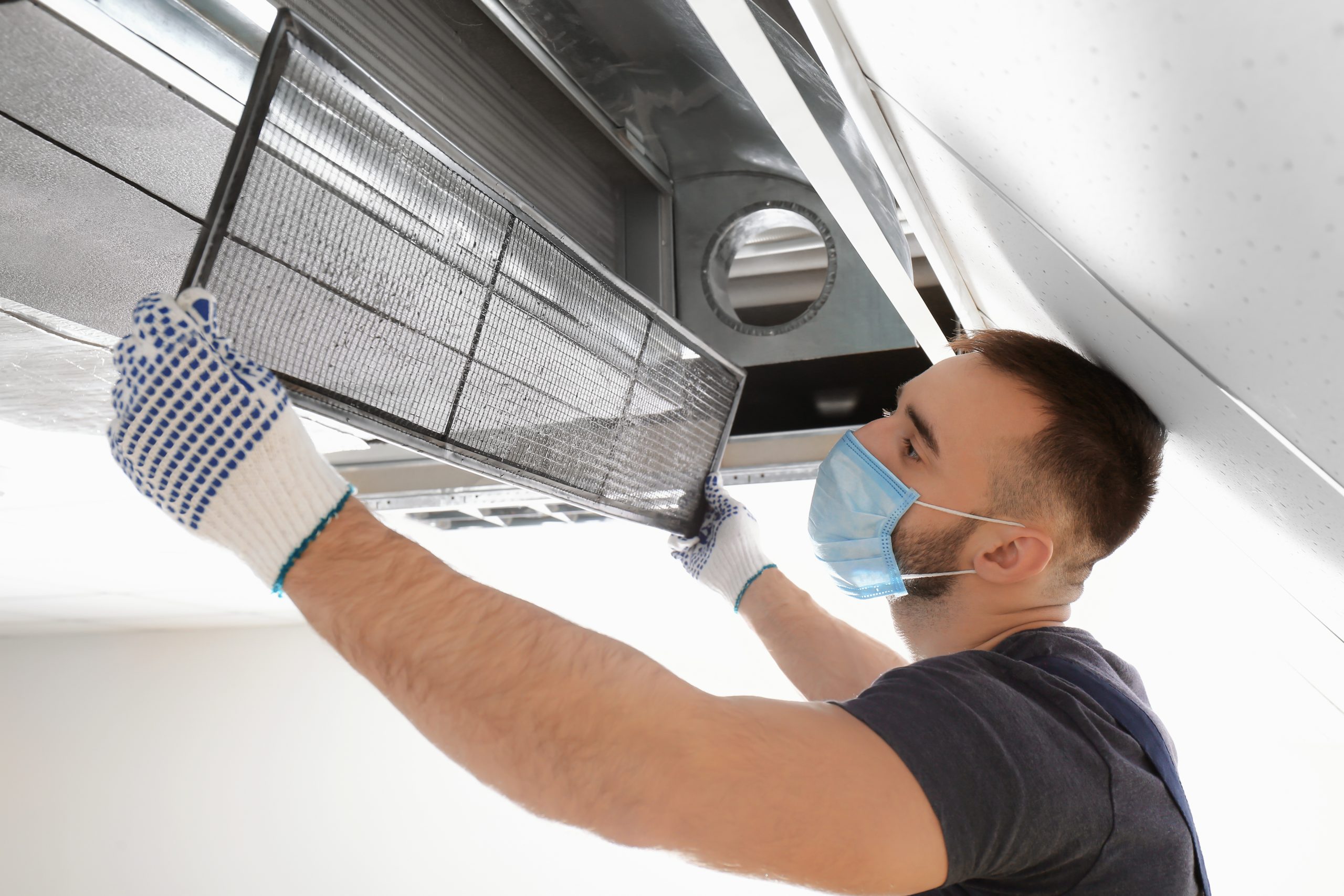
Image credit: wplov.in
Dirty air filters can reduce the airflow and efficiency of your HVAC system and allow dust and debris to accumulate in your air ducts. Replace disposable filters every few months, or clean washable filters as the manufacturer recommends.
ii. Keep Your Home Clean
Regular home cleaning can help prevent dust and debris from accumulating in your air ducts. Vacuum your carpets and furniture, dust your surfaces, and mop your floors regularly.
iii. Keep Your HVAC System in Good Condition
Regular maintenance of your HVAC system can prevent breakdowns and improve its efficiency. Have your system inspected and serviced by a professional at least once a year.
iv. Seal Your Ducts

Image credit: allservice-master.com
Leaky air ducts can allow dust and debris to enter your home, reduce the efficiency of your HVAC system, and increase your energy bills. Seal any leaks in your air ducts with duct sealant or professional duct sealing services.
14. Consider Air Duct Sanitizing
In addition to cleaning your air ducts, you may also want to consider air duct sanitizing. This involves using a special cleaning solution to kill bacteria, mold, or other microorganisms in your air ducts. Air duct sanitizing can improve the indoor air quality of your home and reduce the risk of respiratory illnesses. However, it’s important to use a safe and effective sanitizing solution and to follow the manufacturer’s instructions carefully.
15. When To Seek Professional Help
Air duct tips mentioned above will make removing dust and debris from air ducts more manageable. However, for more severe and complex cases when there’s too much dust and debris in the air ducts, it’s best to look for a professional duct cleaner to ensure they have your air ducts cleaned instead of going the DIY route.

Image credit: starducts.com
Although calling for professional help might cost money, it can be more convenient and save you from costly mistakes. Also, it’s highly recommended to have professionals inspect, maintain, and thoroughly clean your air ducts at least once a year.
16. Clean Or Replace The Air Duct Filter
The main purpose of an air filter is to capture dust and debris so that they don’t accumulate much on the air duct. These will be the first components of an air conditioning system that will get dirty. This is why it’s important to clean it periodically.
In addition, the filters of your air duct can affect the machine’s overall efficiency. Air conditioning systems usually work best with clean filters because their operation does not require much power, allowing you to save on electricity costs.
Sometimes, air filters can be dirty or worn out, so cleaning them won’t be enough. In these cases, it’s highly recommended to replace the filter. The filters are inexpensive, and replacing them is fairly easy; you won’t need professional help to do it properly.
Factors to Consider When Cleaning Air Ducts
i) Type of HVAC system

Image credit: cielowigle.com
One of the first factors to consider when cleaning air ducts is the type of HVAC system used. There are various types of HVAC systems, including central forced-air systems, heat pumps, ductless mini-splits, and others.
Each system has a unique design, and the air ducts are designed to work with the specific HVAC system. Therefore, it is essential to understand the type of HVAC system used to determine the best cleaning approach for the air ducts.
ii) Level of Contamination
The level of contamination can vary depending on several factors, including the location of the building, the type of HVAC system, and the activities carried out in the building. The level of contamination determines the cleaning method and frequency required to clean the air ducts effectively. If the air ducts have a high level of contamination, it may be necessary to clean them more frequently or use more aggressive cleaning methods.
iii) Cleaning Equipment
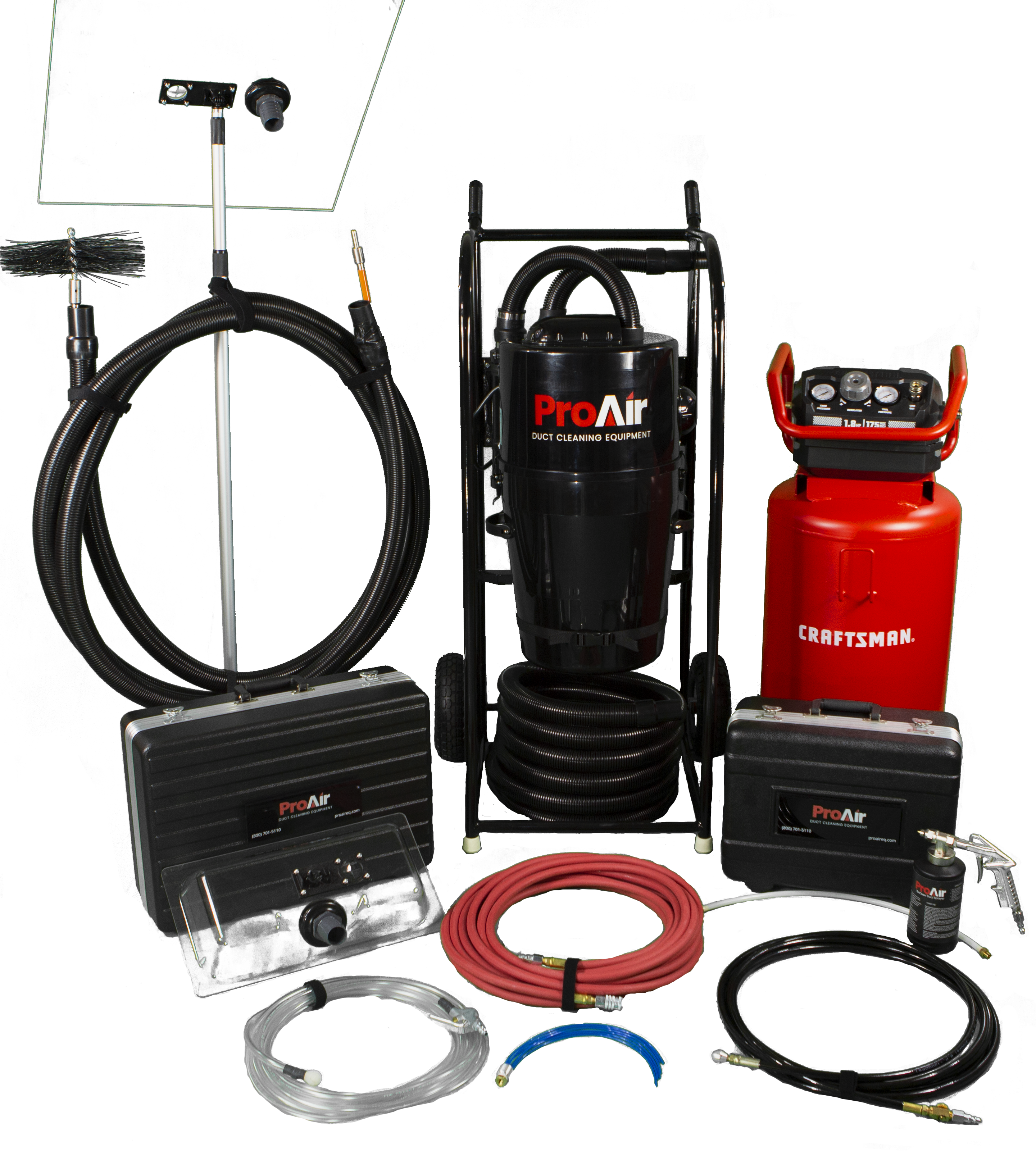
Image credit: proairductcleaning.ca
The cleaning equipment used should be appropriate for the type of HVAC system and the level of contamination. The cleaning equipment should be designed to prevent damage to the air ducts and the HVAC system.
iv) Professional Cleaning Services
When hiring professional cleaning services, it is essential to consider their experience and qualifications. The cleaning service should be licensed and insured and have experience cleaning air ducts for the specific type of HVAC system.
v) Cost
The cost of cleaning air ducts is another crucial factor to consider. The cost can vary depending on the level of contamination, the type of HVAC system, and the cleaning method used. In general, cleaning air ducts can range from a few hundred to a few thousand dollars.
vi) Health Concerns
Poor air quality can lead to various health concerns, such as respiratory issues, allergies, and infections. To minimize health concerns, it is important to use appropriate cleaning methods and equipment, such as HEPA filters, to prevent the release of contaminants into the air. When selecting the cleaning method, it is also important to consider the health concerns of the occupants of the building, such as allergies or respiratory issues.
vii) Maintenance

Image credit: 773airduct.com
Regular maintenance is crucial to ensure the efficient operation of the HVAC system and prevent the accumulation of contaminants in the air ducts. Regular maintenance may involve changing HVAC filters, cleaning the air ducts, and inspecting the HVAC system for any issues.
Frequently Asked Questions on How to Clean Air Ducts
a) How do I clean my air ducts myself?
It is generally not recommended for individuals to clean their air ducts themselves. Air duct cleaning requires specialized equipment and expertise; attempting it yourself can be difficult and potentially dangerous. Additionally, cleaning the ducts improperly can cause damage to the system or make the air quality worse by releasing contaminants into the air.
However, you can do a few things to help maintain the cleanliness of your air ducts, such as changing your air filters regularly, keeping your vents and registers clean, controlling moisture, and keeping the area around your HVAC system clean. By following these tips, you can help maintain the cleanliness of your air ducts and promote good indoor air quality.
b) Does cleaning air ducts make a difference?
Cleaning air ducts can make a difference in the air quality of a building, especially if the air ducts are dirty or contaminated with mold, bacteria, or other allergens, as not all the dirt in the air ducts adheres to the duct surfaces. Over time, dust, dirt, and other debris can accumulate inside air ducts and the cooling coils, reducing the efficiency of the HVAC system and increasing the number of pollutants in the air.

Image credit: cleanaircolumbia.com
Cleaning air ducts can remove these contaminants, improving indoor air quality and reducing the risk of health problems caused by poor air quality. However, it is important to note that not all air duct cleaning services are created equal, and some may not effectively remove all contaminants.
c) How do I know if my air ducts need to be cleaned?
Several signs can indicate your air ducts need to be cleaned, including:
1. Visible dust and debris
If you notice dust or debris around your air vents or on your air filters, it could be a sign that your air ducts are dirty.
2. Poor air quality
If you or someone in your household is experiencing allergy or asthma symptoms or notices a musty or stale smell from your vents, it could indicate that your air ducts need cleaning.
3. Reduced airflow
If you notice that the airflow from your vents has decreased, or if some rooms in your home are consistently cooler or hotter than others, it could be a sign of blockages or buildup in your air ducts.
4. Pest infestation
If you see evidence of insects or rodents in your air ducts, it’s important to have them cleaned immediately to avoid health hazards and prevent further infestation.
d) What causes dirty air ducts?
Various factors, including lack of maintenance, poor filtration, poor ventilation, environmental factors, pets, and mold and moisture, can cause dirty air ducts. Moisture can accumulate in air ducts, providing a breeding ground for mold and other fungi. These can produce spores that can spread throughout the home and cause respiratory problems.

